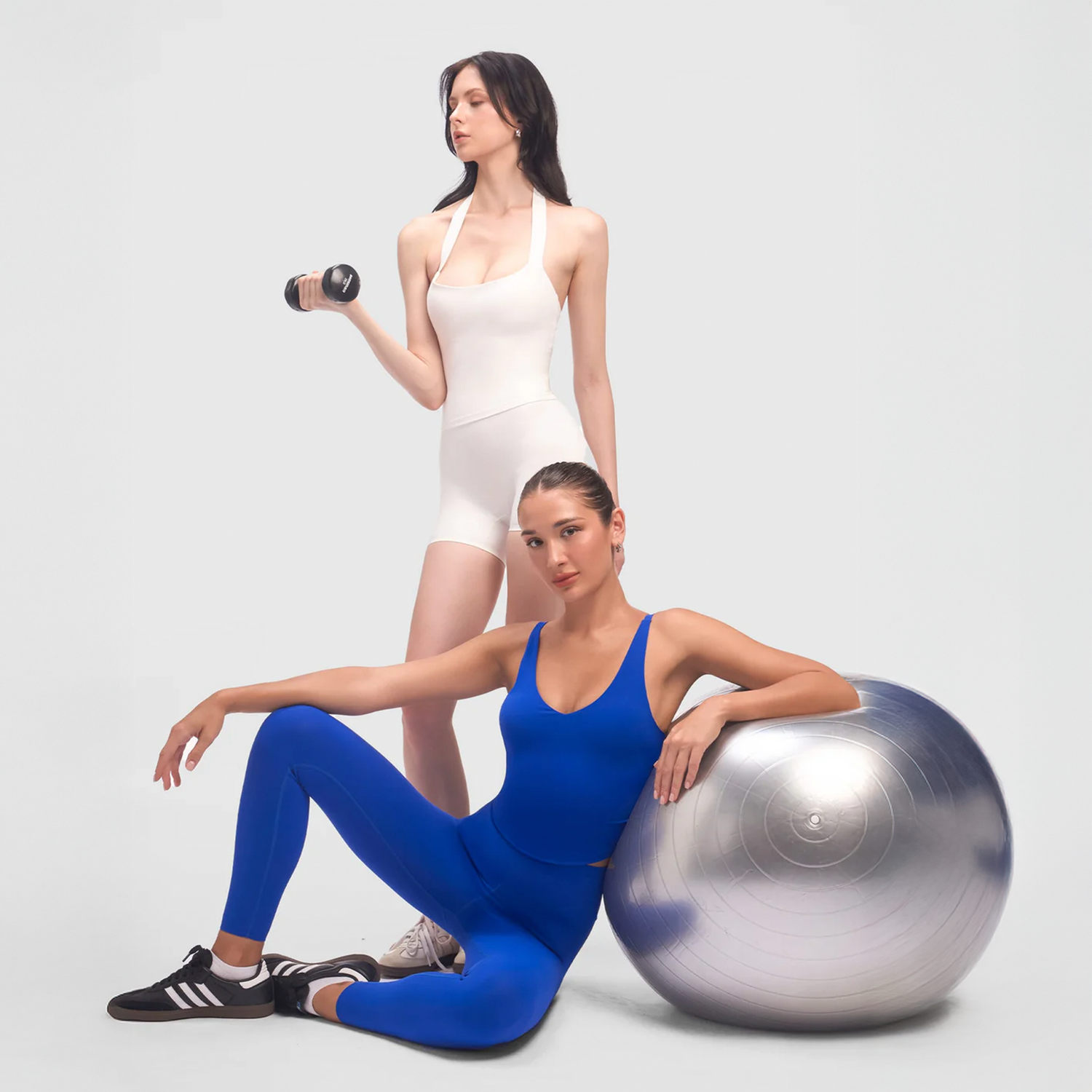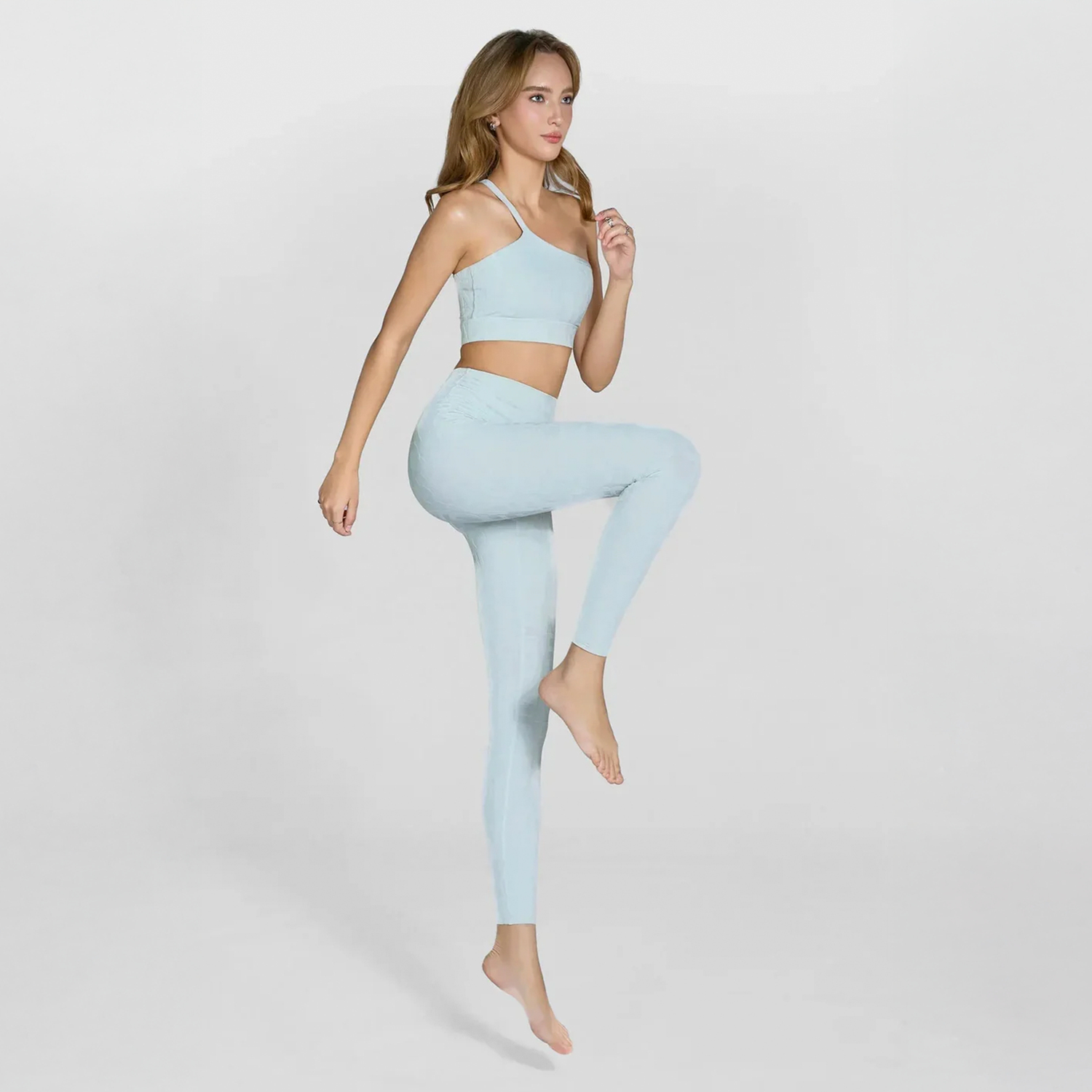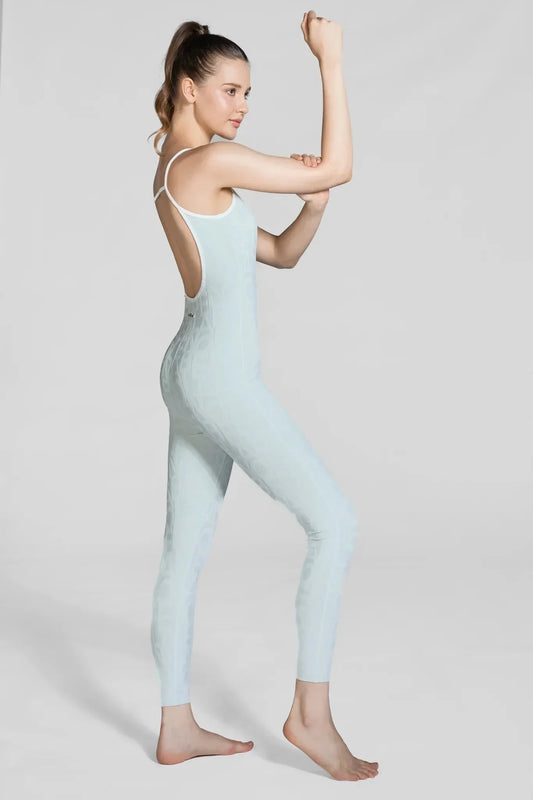Reformer Pilates is a globally popular workout method thanks to its ability to build strength, improve posture, and enhance overall flexibility. Unlike traditional mat Pilates, Reformer Pilates uses a specialized machine that allows practitioners to perform movements with greater precision, safety, and effectiveness. At Olaben, we not only offer premium activewear but also share knowledge, tips, and Reformer Pilates experiences to help you elevate your wellness journey and modern lifestyle.
What is Reformer Pilates?
Reformer Pilates is a form of Pilates practiced on the Reformer – a specially designed rectangular frame, typically made of wood or metal. On this frame lies a cushioned platform called the carriage, which glides smoothly on rails, allowing practitioners to perform movements seamlessly according to the “flow” principle of Pilates.
The Reformer also features an adjustable foot bar to suit different heights and exercise requirements. The carriage is connected to a set of springs with varying resistance levels, enabling users to increase or decrease the intensity of their workouts.
At the opposite end of the frame, there are straps with handles (for arms and legs), along with supportive features such as shoulder blocks and a headrest to ensure comfort and safety during training.
Thanks to its intelligent design, Reformer Pilates provides a full-body workout, enhancing both strength and flexibility while promoting proper body alignment.

How is the Reformer Pilates machine used?
Exercises with the Reformer Pilates machine offer multiple benefits: improving posture, boosting overall health, enhancing endurance, and strengthening balance. During training, users perform movements such as pulling, pushing, or holding the carriage to create resistance and engage target muscle groups.
One of the Reformer’s biggest advantages is its versatility. Thanks to its unique design, the machine allows you to work out in various positions: lying, sitting, kneeling, standing, pulling straps, or pushing the bar. Additionally, it comes with supportive accessories that diversify workouts and enhance the overall training experience.
The outstanding benefits of the Reformer Pilates machine
Now that you understand what a Reformer Pilates machine is, let’s explore the incredible benefits it offers for health and body shape with Olaben:
1. Full-body strength improvement
While Pilates traditionally focuses on the core, the Reformer allows you to engage all muscle groups from head to toe. Movements such as pulling straps, pushing the carriage, or using bands effectively work the arms, legs, shoulders, and hips, promoting balanced and long-lasting strength.
2. Adjustable resistance
The Reformer uses a system of springs to create resistance, making it easy to adjust workout intensity. This allows challenging exercises like squats or planks to become more accessible while reducing strain on the knees and spine.
3. Strengthening and controlling muscles
The Reformer supports all three types of muscle contractions:
- Concentric: building strength as muscles shorten, like lifting weights.
- Eccentric: controlling muscles as they lengthen, for example lowering in a plank.
- Isometric: holding muscles in a static position to improve stability and balance.
This not only tones muscles but also enhances control and flexibility.

4. Improved posture and flexibility
With accessories such as jump boards, bars, or straps, the Reformer supports diverse training positions: lying, sitting, kneeling, or standing. Both closed-chain and open-chain movements can be adjusted for different goals, from core strengthening to thigh toning and overall posture improvement.
5. Joint-friendly training
A key advantage of Reformer Pilates is its low impact on joints. Because the machine supports the body instead of relying solely on weight-bearing, it reduces discomfort and injury risk. It’s an ideal option for runners, people with arthritis, or anyone seeking a safe yet effective workout method.
Thanks to these benefits, the Reformer Pilates machine not only builds strength but also helps achieve a leaner, more flexible, and resilient body over time.
How to choose the best Pilates Reformer machine
To find the most suitable Pilates Reformer, consider expert recommendations along with real user feedback. Experts highlight the essential features of a good Reformer, while customer reviews provide practical insights into durability, comfort, and effectiveness.
Key factors to consider include:
- Material: A sturdy wood or metal frame ensures durability and stability. Prioritize machines with thick platforms, comfortable padding, and soft straps for an enjoyable workout experience.
- Comfort: Check details like shoulder blocks, headrests, and straps. Also, consider the length and height of the machine to suit different body types.
- Adjustability: A high-quality Reformer should feature adjustable foot bars, headrests, and resistance levels, allowing you to personalize your workout.
By carefully considering these factors, you can choose a Pilates Reformer that fits both your training needs and budget, whether for home practice or studio use.

Enhance your Pilates training with Olaben
For a complete Pilates session, a quality Reformer machine is essential, but so are the right outfits and accessories. Olaben offers a premium range of activewear, from figure-hugging leggings, supportive bras, breathable tank tops, to training jackets and Pilates & yoga accessories.
You’ll also find yoga mats, sport water bottles, and practical gym bags to keep you fully equipped. With modern designs and breathable, stretchy fabrics, Olaben’s yoga & Pilates collection elevates your training experience – from the Pilates studio to everyday life.
Visit Olaben Store for a firsthand experience
You can try our latest designs and receive dedicated consultation from the Olaben team at our showrooms:
Ho Chi Minh City
- Flagship Store: 1M, Street 10, Thao Dien, District 2 (Thu Duc) – Hotline: 092.828.2088
- Nguyen Trai: 35 Nguyen Trai, Ben Thanh, District 1 – Hotline: 036.428.2088
Hanoi
- Vincom Times City: 458 Minh Khai Street, Vinh Phu, Hai Ba Trung – Hotline: 037.928.2088
- 263 Pho Hue, Hai Ba Trung








